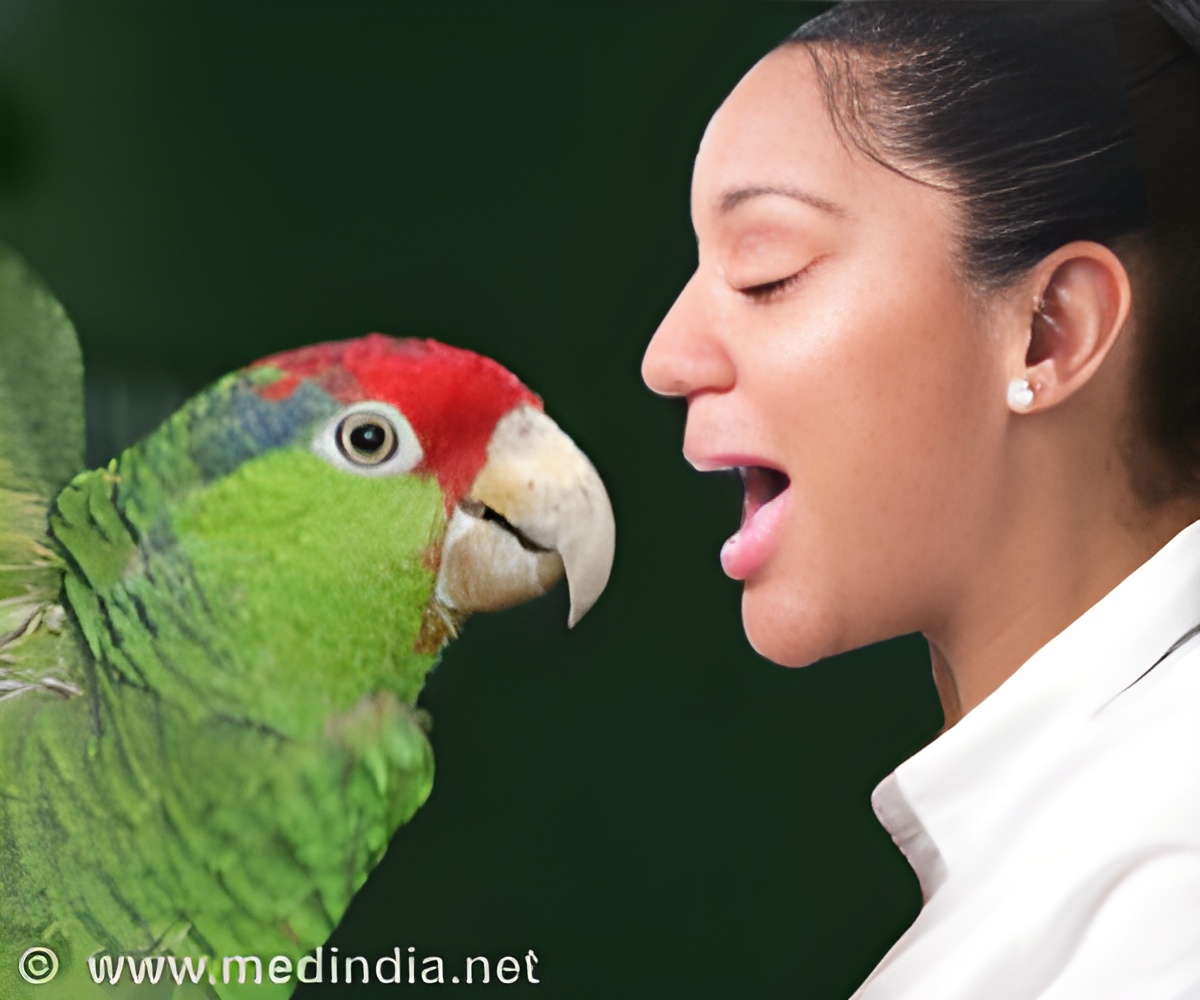Striking similarity has been found in the gene activity for human speech and bird song, according to a new study.

Production of learned vocal expressions is confined only to humans, bats, dolphins, elephants, and sea lions among mammals, and in zebra finches, canaries, crows, parrots and hummingbirds among birds.
Human brains are asymmetric and language tends to be organized in the left hemisphere as opposed to the right. Birds are also often assumed to show similar hemispheric specialization for song. And the brain chemical responsible for this is dopamine.
Dopamine is a neurotransmitter produced in several areas of the brain and plays an important role in brain processes that control movement, emotional response, and ability to experience pleasure and pain.
Cases have been reported where dopamine receptor antagonists (drugs blocking dopamine receptors) temporarily disrupted normal vocal motor control, especially seen in neurological and psychiatric patients with voice and speech problems, such as Parkinson's disease (PD), stuttering, Tourette's syndrome, and schizophrenia. The evidence thus indicates the major role played by dopamine in proper execution of motor commands and cognitive processing associated with speech production.
Similarly, in birds, dopamine release from the front part of the brain and into the nerves in the brainstem that control muscle movements triggers bird song.
However, there are a couple of differences, according to the researchers. First, while humans are able to learn new vocal expressions throughout the lifespan, some birds such as zebra finches are not able to imitate new songs well, if at all, in adulthood, and others such as African Grey parrots, have only limited ability to imitate new sounds as adults. Secondly, birds use most of their songs for affective communication while human speech use semantic communication.
Reference: Simonyan, K., et al. Dopamine regulation of human speech and bird song: A critical review. Brain & Language (2012), doi:10.1016/j.bandl.2011.12.009
Source-Medindia











